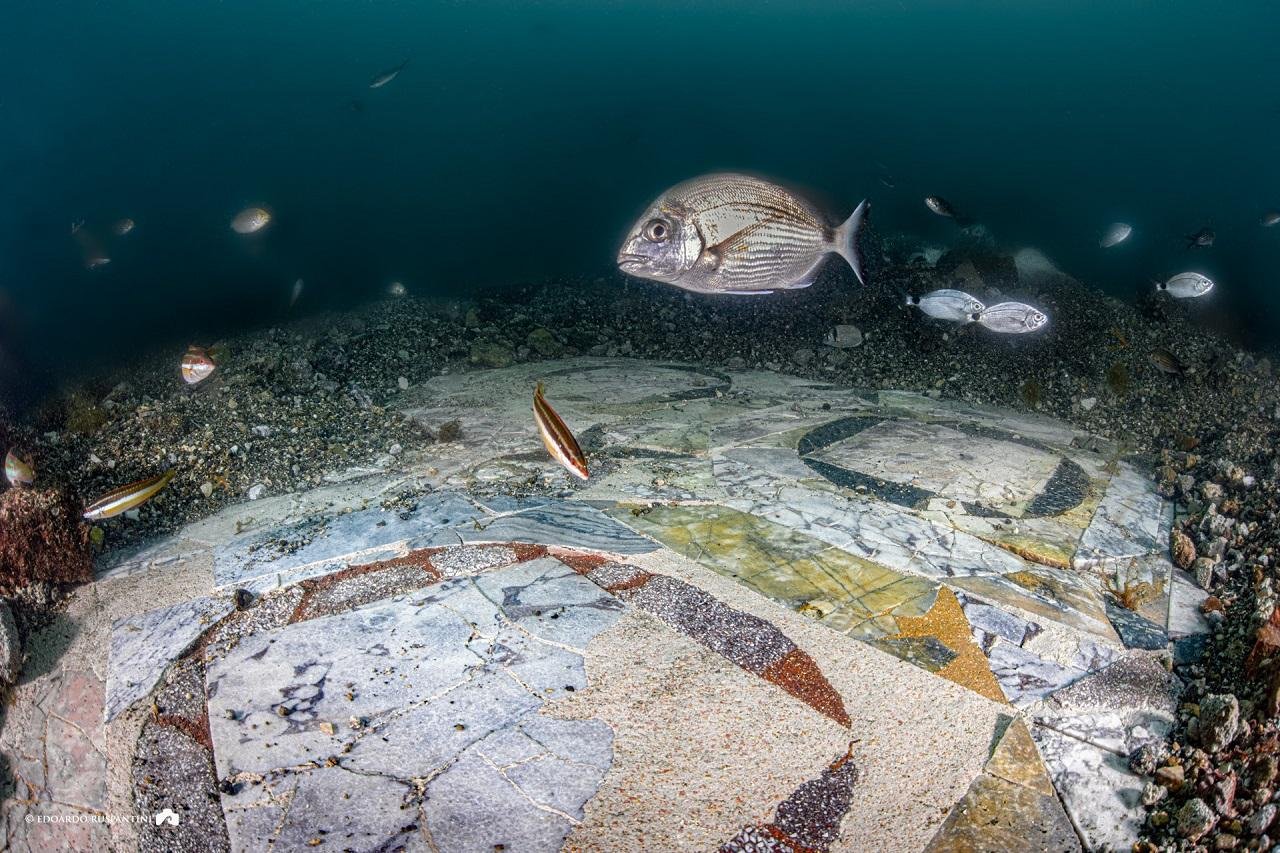An underwater discovery has emerged from the depths of the Submerged Archaeological Park of Baiae in Bacoli, Italy. Archaeologists have uncovered an exquisite marble floor belonging to an ancient Roman villa. This discovery, part of an ongoing restoration project, showcases ancient Rome’s artistic and architectural sophistication.
 Marble floor of a submerged Roman villa restored in Italy. Credit: Edoardo Ruspantini / Parco Archeologico Campi Flegrei
Marble floor of a submerged Roman villa restored in Italy. Credit: Edoardo Ruspantini / Parco Archeologico Campi Flegrei
The project, spearheaded by CSR Restauro Beni Culturali and Naumacos Underwater Archaeology and Technology, has faced numerous challenges due to the extreme fragmentation and extensive area of the remains. The floor, constructed towards the end of the Roman Empire, covers approximately 250 square meters (2,700 square feet) and showcases intricate geometric patterns formed by precisely cut pieces of marble.
Unlike traditional mosaics, which use small, uniformly sized pieces known as tesserae, the opus sectile technique involves larger, meticulously shaped pieces that fit together like a puzzle. This method allowed for uniquely detailed and elaborate designs, often incorporating a variety of colors and materials to achieve a stunning visual effect. Such floors were typically found in high-status buildings like villas, palaces, and public baths.
Bacoli’s mayor, Josi Gerardo Della Ragione, described the marble floor as “the magic of Baia Sommersa.” He highlighted the floor’s elaborate geometric motifs and extraordinary craftsmanship, noting that it offers a fascinating window into the life and art of ancient Rome. “This discovery allows visitors to immerse themselves in history, exploring the hidden wonders beneath the surface of the sea,” he said.
The discovery was announced by the Parco Archeologico Campi Flegrei, which described the restoration as a “very complicated challenge due to the extreme fragmentation of the remains.” The floor’s construction from second-hand marble reflects the economic pressures even the elite faced during the declining years of the Roman Empire. Researchers noted, “It was a very costly and demanding endeavor for the villa’s owner, who had to settle for recycled materials to create the chosen design.”
Baiae, also known as Baia, was a renowned resort for Roman elites, famous for its thermal baths, lavish villas, and hedonistic atmosphere. Emperors such as Nero and Hadrian were known to frequent the area, drawn by its luxurious amenities.
However, due to volcanic activity and bradyseism—the gradual, alternating uplift and sinking of the Earth’s surface—significant portions of Baiae eventually sank below sea level. Today, the ruins of Baiae form part of the underwater park, where sunken structures, mosaics, statues, and remnants of Roman architecture can be explored by divers or viewed through glᴀss-bottomed boats.





